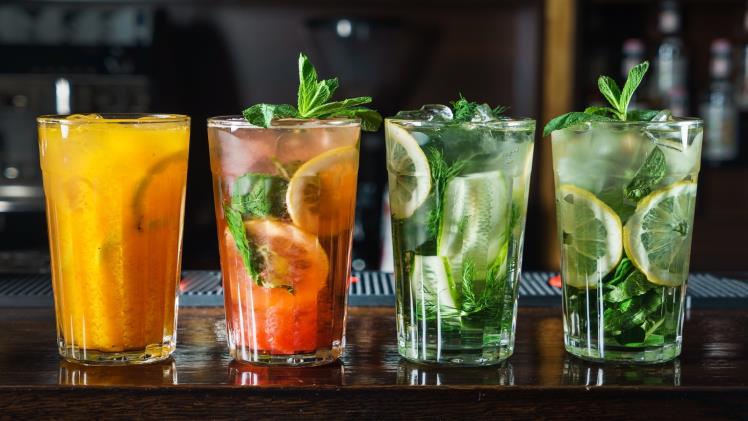Significance and popularity of American whiskey
American whiskey, known for its distinct flavour and character, is enormously popular globally. It stands significant in cultural heritage with Kentucky bourbon and Tennessee variants making a mark due to the aging method and unique production process, promoting American distilling tradition.
History of American Whiskey
Origin and evolution of American whiskey
American whiskey originated from Irish and Scottish immigrants bringing their distilling methods to America. Over centuries, American whiskey evolved into unique sub-types such as bourbon, Tennessee and rye, shaped by local resources like corn and varied ageing processes.
Important historical moments in American whiskey
American whiskey has deep historical roots, intertwined with major events. During the Civil War it funded Union troops, survived Prohibition through “medicinal allowances,” and saw a resurgence during spikes of “Mad Men”-fueled post-war nostalgia for classic masculinity.
Impact of prohibition era on American whiskey production
The Prohibition era (1920-1933) significantly halted American whiskey production. Because underground bootleg variants were often poor quality or dangerous, the industry’s reputation suffered dramatically. This damaging impact took years to fully rebound, even after prohibition officially ended.
Understanding Whiskey Types
Explanation of whiskey varieties (Bourbon, Tennessee, Rye)
Bourbon, Tennessee, and Rye are whiskey varieties distinguished by distinct manufacturing processes and ingredients. Bourbon’s main grain is corn and aged in charred oak. Tennessee undergoes a charcoal mellowing process while Rye uses primarily rye grain for a spicy taste.
Differences in manufacturing processes for each type
Manufacturing processes differ for each type of product, determined by aspects like material, design, and purpose. Factors include the mechanization level, labour intensity work involved, scale of production, cost considerations and environmental impact; creating significant variances in manufacturing methods observed.
Regional influences on whiskey character
Regional influences significantly affect a whiskey’s character. Environmental factors such as climate, soil composition, and water quality contribute to variations in grain growth thereby altering distillation processes which essentially shape the flavor profile of the resultant whiskey.
Most Recognizable American Whiskey Brands
Overview of prominent American whiskey labels
Prominent American whiskey labels include Jim Beam, Jack Daniel’s, and Maker’s Mark, renowned for Kentucky bourbon; Wild Turkey and Woodford Reserve offer extraordinary rye whiskies. Others like Bulleit Bourbon reflect regional styles from Tennessee and Kentucky.
Brief history and significance of each brand
Each brand carries a unique history and significance. It is born from innovation, growth, and strategy; gaining a reputation over years or decades of providing quality products or services. These brands fundamentally impact consumer behaviour, market trends, and the global economy.
Up-and-Coming Whiskey Brands
Introduction to Emerging Brands
American Whiskey is a type of distilled alcoholic beverage made primarily from fermented grain mash, typically featuring corn, rye, wheat or barley. Prominently renowned throughout the world, these liquors come in several forms such as bourbon, Tennessee whiskey and Rye whiskey. American Whiskey carries significant historical significance and is deeply interwoven into the diverse cultural fabric of America due to prominent distilleries being rooted in traditional regions like Kentucky and Tennessee. This introduction seeks to delve into the distinctive profiles, rich history and unique processes involved in creating these highly favoured variants of American Whiskey.
Influence on the whiskey market
The whiskey market is largely impacted by factors such as cultural shifts, consumer preferences, regulatory policies, and global economics. Mature markets are progressing towards premiumisation while emerging economies introduce a wave of new enthusiastic consumers.
Unique features and selling points of these brands
These brands boast unique features like exceptional craftsmanship and innovative technologies. Selling points include environmentally conscious manufacturing, customer-centric services, superior durability of products, contemporary design aesthetics, offering a vibrant variety of choices with unmatched quality at competitive prices.
Tasting Guide
Basics of whiskey tasting
Whiskey tasting involves four basic steps: observing colour, noticing the aroma, tasting for the flavour profile, and sensing the finish or aftertaste. Each element depicts its quality, age, cask type and distillation process; shaping a drinker’s overall whiskey experience.
Describing whiskey flavour profiles
Whiskey flavour profiles range deeply from rich and smokey, evoking campfires and autumn nights, to smooth caramel or vanilla notes. Some feature spicy undertones or fruity essence whilst others express hints of chocolate, coffee, leather or even nutty flavours.
Tips for properly tasting and appreciating whiskey
When tasting whiskey, observe its colour then swirl gently. Inhale the aroma with the mouth partially open. Next, sip lightly, noticing the initial flavours on your tongue. Hold for a second to discern underlying notes before swallowing and appreciating its balanced complexity.
Pairing suggestions
Pairing suggestions are essential in a variety of industries, especially food and fashion. These recommendations help to complement and enhance flavours or styles by introducing complementary elements that create a harmonious overall experience or appearance.
Conclusion
Recap of the depth and complexity of American whiskey
American whiskey, defined by its depth and complexity, embodies distinctive characters varying from region to region. With unique flavours shaped by ingredients and processes alike – fermentation, distillation, ageing -, it paints a diverse panorama of American tradition and innovation.


